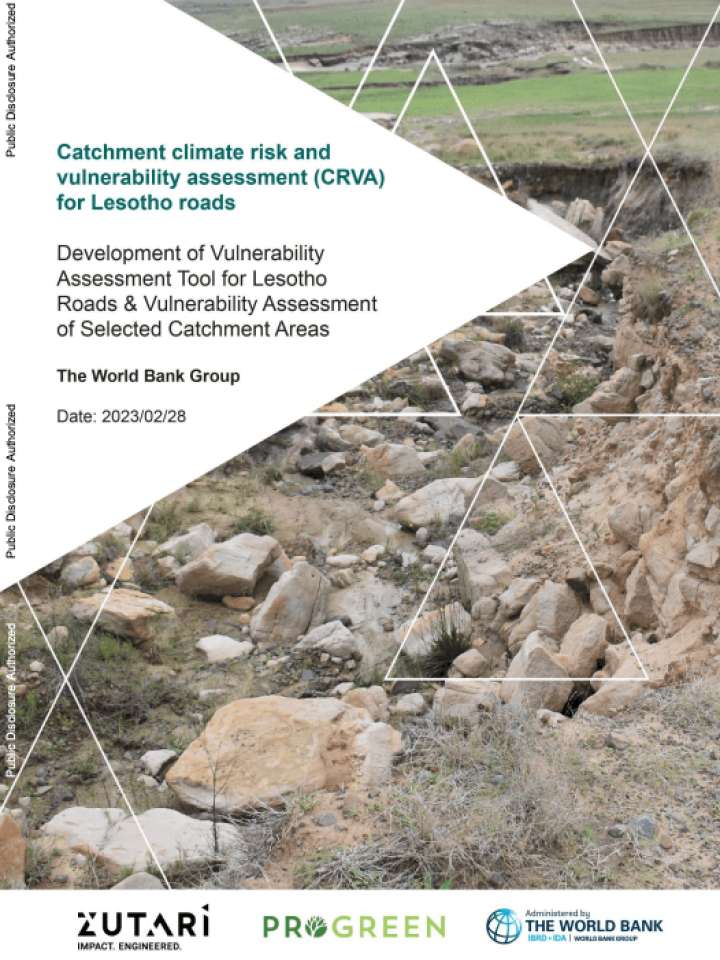Catchment climate risk and vulnerability assessment (CRVA) for Lesotho roads: Development of vulnerability assessment tool for Lesotho roads and vulnerability assessment of selected catchment areas
The primary aim of this study was to undertake a review of existing frameworks for climate and environment vulnerability assessments for roads and to adapt these to the Lesotho context in line with Southern African Development Community (SADC) protocol on transport, the National Strategic Development Plan of Lesotho, and the South African National Roads Agency (SANRAL) Design Guidelines. The adapted climate and environmental risk framework then formed the basis for developing a climate change risk and vulnerability and assessment methodology/tool.
Based on the hazards identified during the site assessments, the report makes the following general recommendations regarding road infrastructure and maintenance in Lesotho:
- Add paved shoulders to all major roads (A and B roads) to protect the main section of the road and improve connectivity with drainage structures and include rivers, etc.
- Increase design flood requirements for all new drainage structures by a minimum of 15%.
- Apply a minimum of 900mm culverts to make it easier for maintenance and clearing.
- Include considerations for climate change in all new road design and rehabilitation projects.
- Reduce the threat posed by minor connecting roads by paving at least the first 25 m of a connection with a major road (A and B) and ensure the provision of adequate drainage.
- Undertake a review of the conditions of all major bridges to determine their ability to manage increased flood frequencies, including a review of the approaches and embankments, as these are particularly vulnerable.
- Engage with local communities to support the clearing of culverts and identify priority interventions to reduce road risk as part of a catchment management plan (CMP).
Explore further

